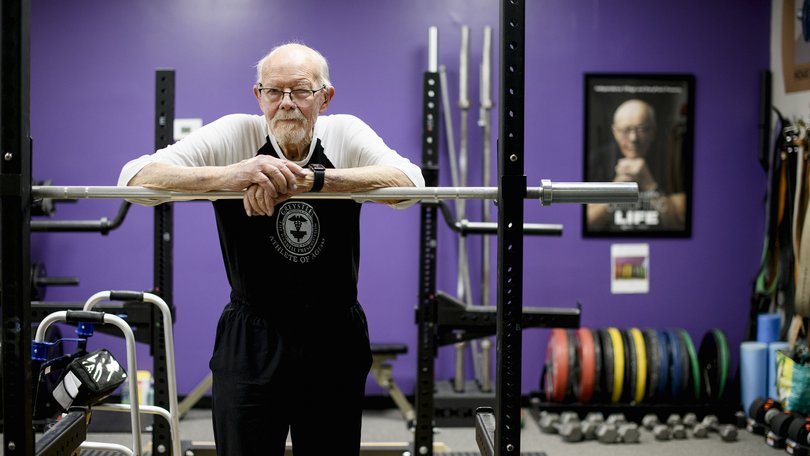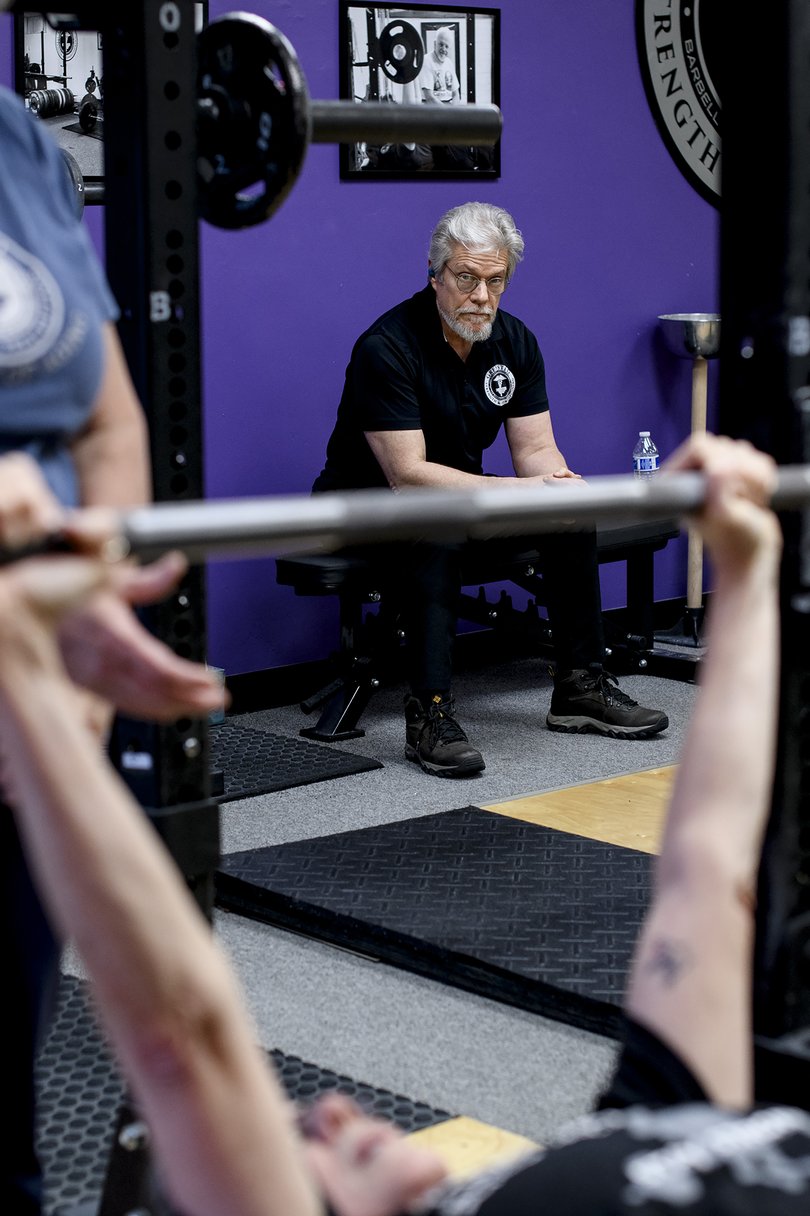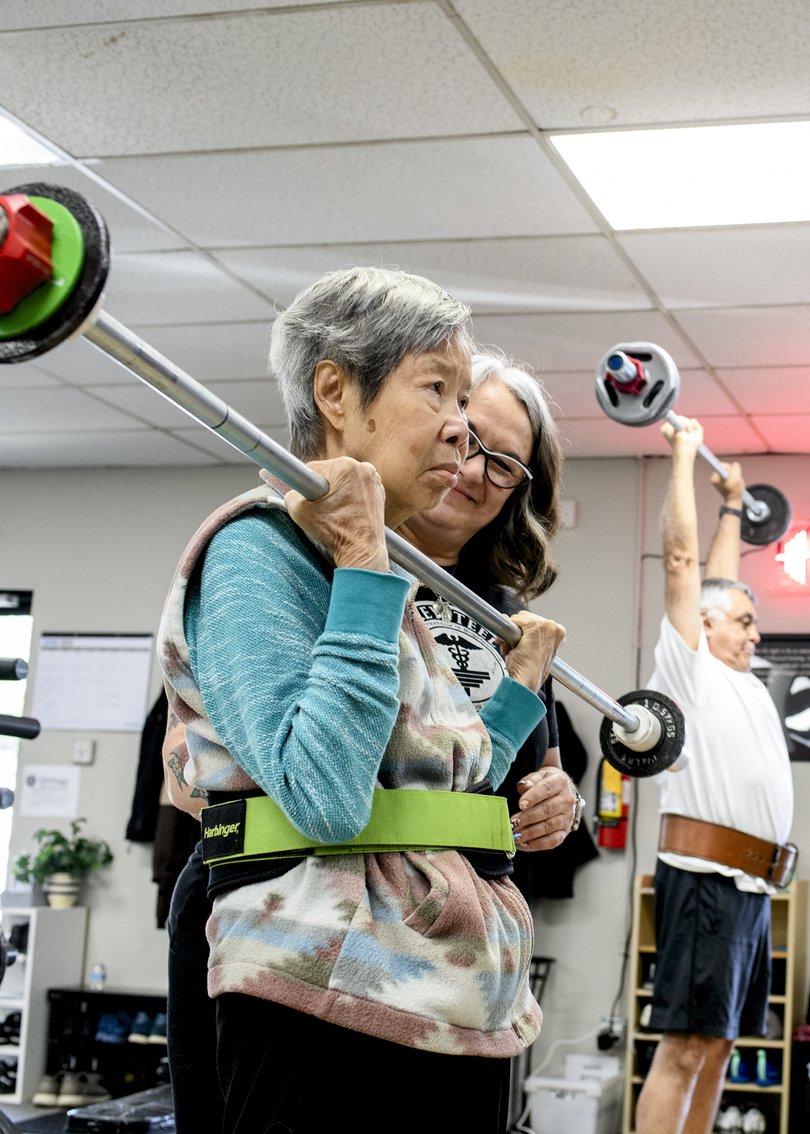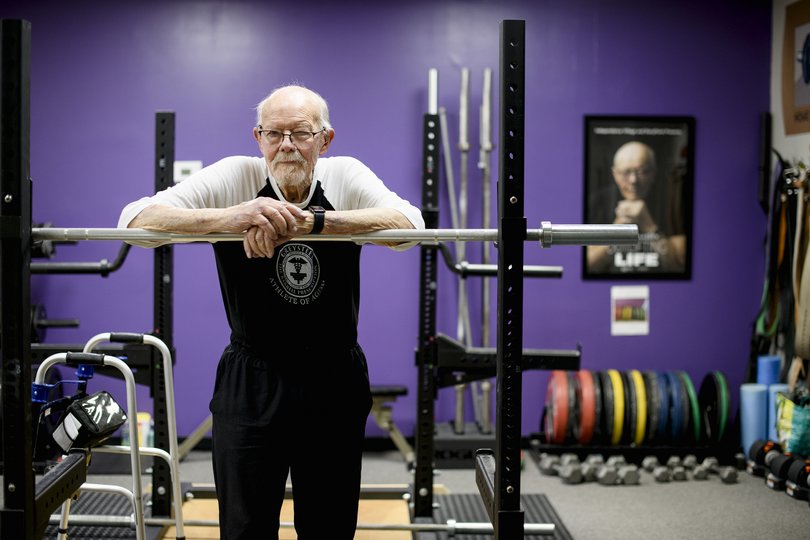THE NEW YORK TIMES: Pumping iron is their secret to ageing well

The clang of weights rang out through Greysteel Strength and Conditioning on a recent Friday morning. Over the pumping music came chirps of instruction and affirmation: You got this, push!
Ann Buszard, 84, strapped on a thick leather belt before stepping up to the barbell she had loaded to 170 pounds. She exhaled and hinged, lifting roughly the weight of a medium-size refrigerator fluidly off the ground, then reversed the move to gently set it down, safely completing a deadlift.
Buszard, a retired nurse, had never so much as touched a weight until she was 74, when she found herself struggling to stand up after kneeling down. She wanted to get stronger, and her son had heard of a local doctor who was moonlighting as a weightlifting coach.
Sign up to The Nightly's newsletters.
Get the first look at the digital newspaper, curated daily stories and breaking headlines delivered to your inbox.
By continuing you agree to our Terms and Privacy Policy.She wound up at Greysteel, a no-nonsense gym in Farmington Hills, Michigan, outside Detroit. While many gyms around the country offer programs for older people, Greysteel distinguishes itself by focusing on old-school barbell lifting.
The logic behind Greysteel is straightforward: Stronger muscles and bones are associated with longer life and better health. And heavy barbell lifting programs are proven to build strength. If you combine those two ideas, the inevitable decline that comes with aging is perhaps not quite so inevitable.
‘All of a sudden, we had this community.’
Greysteel was founded by Dr Jonathon Sullivan, now 65, as a side project while he was working in the emergency room of Detroit Receiving Hospital.
Sullivan served in the Marines before medical school, but never took to what he called the “cardio bunny” style of working out — jumping jacks and 20-mile runs — that he experienced in the Corps. He became interested in lifting while conducting research on brain health for a doctorate.

This led him to the influential training manual “Starting Strength,” by coach and author Mark Rippetoe, and its back-to-basics program resonated. The book railed against the strength machines that had taken over mainstream gyms, preaching instead a minimalist lifting routine performed with a barbell.
Sullivan developed a program to modify standard training methods for older people, which he published in his 2016 book “The Barbell Prescription.” The basic program is built around four lifts: the bench press, squat, deadlift and overhead press — supplemented with cardio. And while the program provides extensive adjustments for older bodies, it focuses on relatively high weight, low repetitions and progressive overload, or structuring a training plan to consistently add difficulty.
He started coaching in 2013 in his garage, then in a derelict space barely big enough for a squat rack, with mushrooms growing out of the wall. By 2018, he was training around 15 people in a real gym. After some 25 years in the emergency room, he found overnight shifts were affecting his health. He committed to Greysteel full time.
It is currently a boom time for the barbell, driven in part by workout trends like CrossFit and internet voices like Substack writer Casey Johnston. Some big-box gym chains have scaled back their cardio offerings to make space for more lifting equipment. This momentum includes seniors: The participation rate at the masters weightlifting national championship, a competition for older people, nearly tripled between 2015 and 2019.
Sullivan now trains about 40 people at Greysteel, which packs eight stations into a strip mall storefront. Members pay $500 a month for two closely supervised training sessions a week, plus access to yoga and martial arts training. (Less expensive remote coaching is also available.)
“It was something I was going to do on the side,” he said. But more people started showing up. “All of a sudden, we had this community.”

‘I just feel better when I’m doing this.’
The American College of Sports Medicine recommends that most adults perform some form of resistance exercise at least twice a week. But less than a third of Americans meet that threshold, and most public health authorities focus on the message that any workout is better than nothing.
While few experts would recommend the demanding routines at Greysteel for all older adults, the approach has clicked for its members — several of them even credit it with saving their lives. Val Rosengren, 75, was diagnosed with a bad case of sarcopenia, an aging-related loss of muscle. But thanks to 10 years of lifting, she said between reps, she has gained 12 pounds of muscle.
Others are simply trying to stay ahead of a slow decline.
“My mom had it all: high blood pressure, diabetes, cholesterol, and ended up with dementia — and that is the worst thing in the world,” said Cathy Jozwick, 61. “So I want prevention, if I can.”
Dr. Nina Blachman, an associate professor of medicine and geriatrics at the NYU Grossman School of Medicine, said that exercise could play an important role in heading off or managing chronic health conditions, though she warned against trying an aggressive workout plan without appropriate caution.
“We want people to do as much exercise as they’re able to do comfortably,” Blachman said. Depending on the person, she said, that could be swimming or chair yoga. But she also sees value in encouraging older people to push themselves, as long as they are careful.
Dr. Asheesh Bedi, the executive director of sports medicine and a professor of orthopedic surgery at the University of Michigan, said older people should take special care with barbell lifting and workouts.
But any physical activity comes with risk. The negative health implications of inactivity may be harder to see, Bedi said, but they might present a bigger risk than carefully supervised barbell workouts.
One Greysteel member, Dr. Walter Sahijdak, 62, suffered a muscle tear soon after starting at the gym — “a squat that went bad” — but he has continued the program.
“Being a desk jockey can really wear you down,” he said. “I just feel better when I’m doing this.”
At 98, John Claassen is the oldest lifter at Greysteel; he uses a walker to approach the barbell.
When he was diagnosed with a potentially fatal gallbladder condition two years ago, he said his strength helped convince his surgeon he could survive an operation to remove it. He said lifting also helped him recover after the procedure.

“I consider everything since then bonus years,” Claassen said.
Training at Greysteel has given him a sense of direction and community. The members exchange birthday cards and keep tabs on one another’s illnesses, surgeries, vacations and personal records.
“We’re like brothers and sisters,” he said. “You feel regenerated by the unity of purpose we have.”
This article originally appeared in The New York Times.
© 2025 The New York Times Company
Originally published on The New York Times
